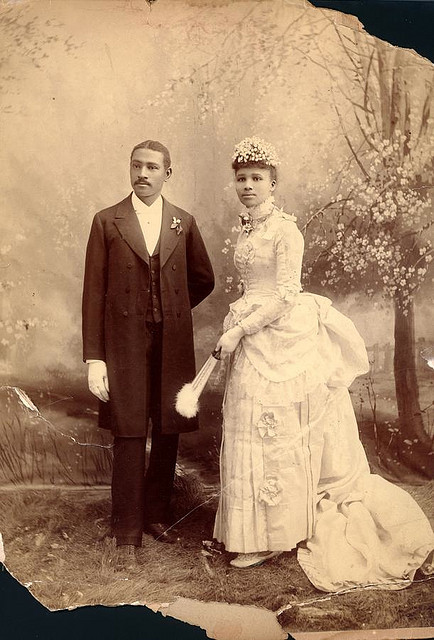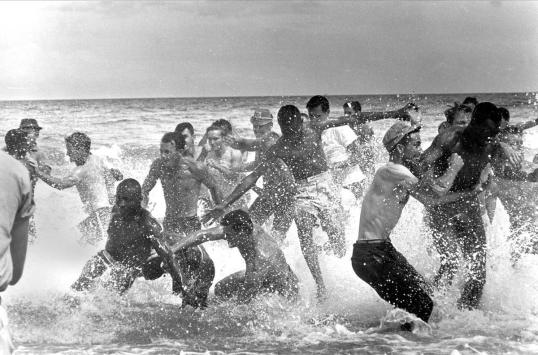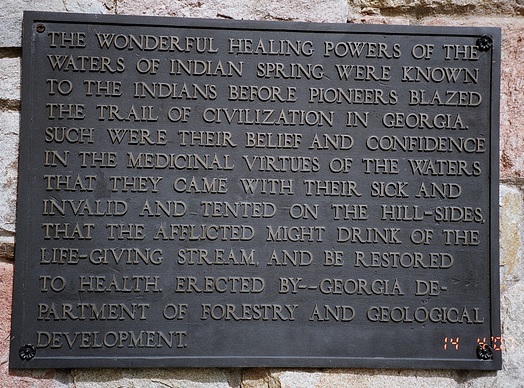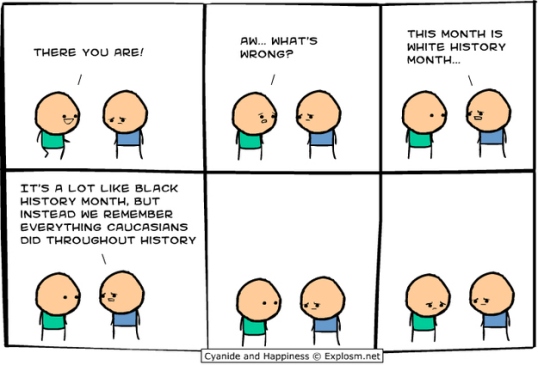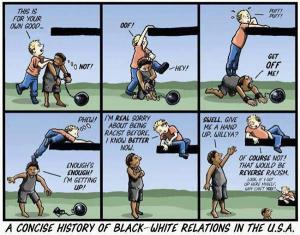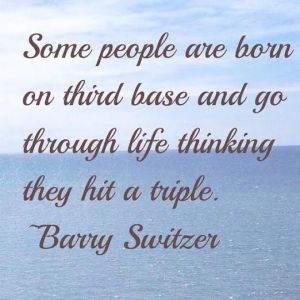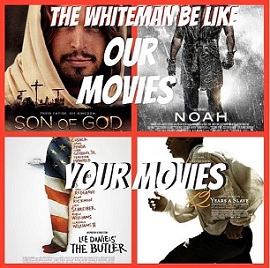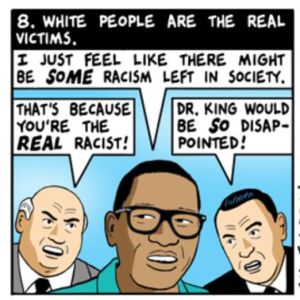Many moons ago, I was in a long-term relationship with a verbally, emotionally & eventually physically abusive young man. Several years into our relationship, while working for a company that occasionally had seminars about various health issues, he came across a pamphlet describing bipolar disorder. He brought it to me, believing that he was suffering from it. After reading it over, I agreed. Towards the end of our relationship as his behavior worsened, I started to research more & saw he had something far worse: Malignant Narcissistic Personality Disorder.
Over the recent years, mostly in part due to modern technology & social media, more & more incidents of police brutality have been captured & highlighted, the most recent being the incident at Spring Valley High School, and the actions of Daniel Holtzclaw. During my research on my ex’s disorder, I discovered information on several studies concluding that a large population of people in powerful, high-ranking & influential positions, such as CEO’s, managers, police officers, military, professors, actors, politicians, judges, pastors & others, are malignant narcissists. Even an investigative piece on Officer.com, a site for police officers, talks about this.
Studies have also claimed that 1-3 out of every 20 people you meet are a sociopath or psychopath at some level. Malignant narcissists qualify as psychopaths. Here is a list of 20 common traits (Keep in mind that some of these traits exist in people who do not have MNPD. If a person has at least 12 out of the 20, they most likely do):
1. THE PATHOLOGICAL LIAR — skillfully deceptive & very convincing. Avoids accountability by making up diversions, new lies, bluffs or threats when questioned. His memory is self-serving as he denies past statements.
Defense Strategy: Verify his words. Do not reveal anything about yourself – he’ll use it against you. Head for the door when things don’t add up. Don’t ask him questions – you’ll only be inviting more lies.
2. THE CONTRACT BREAKER — agrees to anything, then turns around & does the opposite. Marriage, Legal, Custody agreements, normal social/personal protocols are meaningless. This con artist will accuse you of being the contract breaker. Enjoys orchestrating legal action & playing the role of the ‘poor me’ victim.
Defense Strategy: Expect him to disregard any agreement. Have Plan B in place. Protect yourself financially & emotionally.
3. THE HIGH ROLLER — Successfully plows & backstabs his way to the top. His family a disposable prop in his success facade. Is charismatic, eloquent & intelligent in his field, but often fakes abilities & credentials. Needs to have iron-fisted control, relying on his manipulation skills. Will ruthlessly support, exploit or target others in pursuit of his ever-changing agenda. Mercilessly abuses the power of his position. Uses treachery or terrorism to rule or govern. Potential problem or failure situations are delegated to others. A vindictive bully in the office with no social or personal conscience. Often suspicious & paranoid. Others may support him to further their own Mephistophelean objectives, but this wheeler-dealer leaves them holding the bag. Disappears quickly when consequences loom.
Defense Strategy: Keep your references & resume up to date. Don’t get involved in anything illegal. Document thoroughly to protect yourself. Thwarting them may backlash with a cascade of retaliation. Be on the lookout & spot them running for office & vote them out. Educate yourself about corporate bullies.
4. THE SEXUAL NARCISSIST — is often hypersexual (male or female). Pornography, masturbation, incest are reported by his targets. Anything, anyone, young, old, male/female, are there for his gratification. This predator takes what is available. Can have a preference for ‘sado-maso’ sexuality. Often easily bored, he demands increasingly deviant stimulation. However, another behavior exists, the one who withholds sex or emotional support.
Defense Strategy: Expect this type to try to degrade you. Get away from him. Expect him to tell lies about your sexuality to evade exposure of his own.
5. THE BLAME-GAME NARCISSIST — never accepts responsibility. Blames others for his failures & circumstances. A master at projection.
Defense Strategy: Learn about projection. Don’t take the bait when he blames you. He made the mess let him clean it up.
6. THE VIOLENT NARCISSIST — is a wife-Beater, Murderer, Serial Killer, Stalker & Terrorist. Has a ‘chip-on-his-shoulder’ attitude. He lashes out & destroys or uses others (particularly women & children) as scapegoats for his aggression or revenge. He has poor impulse control. Fearless & guiltless, he shows bad judgment. He anticipates betrayal, humiliation or punishment, imagines rejection & will reject first to ‘get it over with’. He will harass & push to make you pay attention to him & get a reaction. He will try to make you look out of control. Can become dangerous & unpredictable. Has no remorse or regard for the rights of others.
Defense Strategy: Don’t antagonize or tip your hand you’re leaving. Ask for help from the police & shelters.
7. THE CONTROLLER/MANIPULATOR — pits people against each other. Keeps his allies & targets separated. Is verbally skillful at twisting words & actions. Is charismatic & usually gets his way. Often undermines our support network & discourages us from seeing our family & friends. Money is often his objective. Other people’s money is even better. He is ruthless, demanding & cruel. This control-freak bully wants you pregnant, isolated & financially dependent on him. Appears pitiful, confused & in need of help. We rush in to help him with our finances, assets, & talents. We may be used as his proxy interacting with others on his behalf as he sets us up to take the fall or enjoys the performance he is directing.
Defense Strategy: Know the ‘nature of the beast’. Facing his failure & consequences will be his best lesson. Be suspicious of his motives & avoid involvement. Don’t bail him out.
8. THE SUBSTANCE ABUSER — Alcohol, drugs, you name it, he does it. We see his over-indulgence in food, exercise or sex & his need for instant gratification. Will want you to do likewise.
Defense Strategy: Don’t sink to his level. Say No.
9. OUR “SOUL MATE” — is cunning & knows who to select & who to avoid. He will come on strong, sweep us off our feet. He seems to have the same values, interests, goals, philosophies, tastes & habits. He admires our intellect, ambition, honesty & sincerity. He wants to marry us quickly. He fakes integrity, appears helpful, comforting, generous in his ‘idealization’ of us phase. It never lasts. Eventually Jekyll turns into Hyde. His discarded victims suffer emotional & financial devastation. He will very much enjoy the double-dipping attention he gets by cheating. We end the relationship & salvage what we can, or we are discarded quickly as he attaches to a “new perfect soul mate”. He is an opportunistic parasite. Our “Knight in Shining Armor” has become our nightmare. Our healing is lengthy.
Defense Strategy: Seek therapy. Learn about this disorder. Know the red flags of their behavior, & “If he seems too good to be true…” Hide the hurt you feel. Never let him see it. Be watchful for the Internet predator.
10. THE QUIET NARCISSIST — is socially withdrawn, often dirty & unkempt. Odd thinking is observed. Used as a disguise to appear pitiful to obtain whatever he can,
11. THE SADIST — is now the fully unmasked malignant narcissist. His objective is watching us dangle as he inflicts emotional, financial, physical & verbal cruelty. His enjoyment is all too obvious. He’ll be back for more. His pleasure is in getting away with taking other people’s assets. His target: women, children, the elderly, anyone vulnerable.
Defense Strategy: Accept the Jekyll/Hyde reality. Make a “No Contact’ rule. Avoid him altogether. End any avenue of vulnerability. Don’t allow thoughts of his past ‘good guy’ image to lessen the reality of his disorder.
12. THE RAGER — flies off the handle for little or no provocation. Has a severely disproportionate overreaction. Childish tantrums. His rage can be intimidating. He wants control, attention & compliance. In our hurt & confusion we struggle to make things right. Any reaction is his payoff. He seeks both good or bad attention. Even our fear, crying, yelling, screaming, name-calling, hatred are his objectives. If he can get attention by cruelty he will do so.
Defense Strategy: Manage your responses. Be fully independent. Don’t take the bait of his verbal abuse. Expect emotional hurt. Violence is possible.
13. THE BRAINWASHER — is very charismatic. He is able to manipulate others to obtain status, control, compliance, money, attention. Often found in religion & politics. He masterfully targets the naive, vulnerable, uneducated or mentally weak.
Defense Strategy: Learn about brainwashing techniques. Listen to your gut instinct. Avoid them.
14. THE RISK-TAKING THRILL-SEEKER — never learns from his past follies & bad judgment. Poor impulse control is a hallmark.
Defense Strategy: Don’t get involved. Use your own good judgment. Say No.
15. THE PARANOID NARCISSIST — is suspicious of everything usually for no reason. Terrified of exposure & may be dangerous if threatened. Suddenly ends relationships if he anticipates exposure or abandonment.
Defense Strategy: Give him no reason to be suspicious of you. Let some things slide. Protect yourself if you anticipate violence.
16. THE IMAGE MAKER — will flaunt his ‘toys’, his children, his wife, his credentials & accomplishments. Admiration, attention, even glances from others, our envy or our fear are his objective. He is never satisfied. We see his arrogance & haughty strut, as he demands center stage. He will alter his mask at will to appear pitiful, inept, solicitous, concerned, or haughty & superior. Appears the perfect father, husband & friend – to those outside his home.
Defense Strategy: Ignore his childlike behaviors. Know his payoff is getting attention, deceiving or abusing others. Provide him with ‘supply’ to avert problems.
17. THE EMOTIONAL VACUUM — is the cruelest blow of all. We learn his lack of empathy. He has deceived us by his cunning ability to mimic human emotions. We are left numbed by the realization. It is incomprehensible & painful. We now remember times we saw his cold vacant eyes & when he showed odd reactions. Those closest to him become objectified & expendable.
Defense Strategy: Face the reality. They can deceive trained professionals.
18. THE SAINTLY NARCISSIST — proclaims high moral standing. Accuses others of immorality. “Hang ’em high” he says about the murderer on the 6:00 news. This hypocrite lies, cheats, schemes, corrupts, abuses, deceives, controls, manipulates & torments while portraying himself of high morals.
Defense Strategy: Learn the red flags of behavior. Be suspicious of people claiming high morals. Can be spotted at a church near you.
19. THE CALLING-CARD NARCISSIST — forewarns his targets. Early in the relationship he may ‘slip up’ revealing his nature saying “You need to protect yourself around me” or “Watch out, you never know what I’m up to.” We laugh along with him & misinterpret his words. Years later, coping with the devastation left behind, his victims recall the chilling warning.
Defense Strategy: Know the red flags & be suspicious of the intentions of others.
20. THE PENITENT NARCISSIST — says, “I’ve behaved horribly, I’ll change, I love you, I’ll go to therapy.” Appears to ‘come clean’ admitting past abuse & asking forgiveness. Claims we are at fault & need to change too. The sincerity of his words & actions appear convincing. We learn his words are verbal hooks. He knows our vulnerabilities & what buttons to push. We question our judgment about his disorder. We can disregard “Fool me once…” We hope for change & minimize past abuse. With a successful retargeting attempt, he will enjoy his second reign of terror even more if we allow him back in our lives.
Defense Strategy: Expect this. Self-impose a “No Contact” rule. Focus on the reality of his disorder. Journal past abusive behavior to remind yourself. Join a support group.
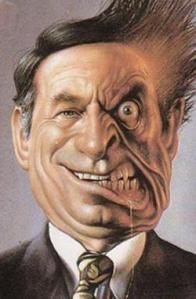
Of course the best thing to do is to permanently remove these types of people from your life. However, this is not always possible in the instance they are a family member, boss, etc. There is a self-proclaimed narcissist, Dr. Sam Vaknin, who has a site with tons of information about this disorder & gives advice on how to properly deal with people with MNPD if/when that is the case. There is also a documentary film called The Corporation that actually details these traits, applying them to common practices among many big businesses, being that corporations, under the 14th Amendment, are deemed as individuals.
My hope is that this disorder becomes more well known. There are far too many people in power who have the ability to deeply negatively impact so many peoples lives — they need to be outed & removed from their positions. It would make the World a far better place…
Posted in
Uncategorized and tagged
addiction,
African-American,
ben fields,
bipolar,
bipolar disorder,
Black history,
black lives matter,
black women,
borderline personality disorder,
co dependancy,
control freak,
daniel holtzclaw,
deputy ben fields,
domestic abuse,
domestic violence,
killed by police,
malignant narcissicm,
malignant narcissistic personality disorder,
mental health,
mental illness,
mental illness symptoms,
mental illness traits,
multiple personality disorder,
narcissism,
narcissist,
obsessive compulsive disorder,
officer indicted,
officer involved shooting,
paranoia,
paranoid personality disorder,
personality disorder,
police brutality,
police shooting,
psychopath,
racism,
reverse racism,
Richland County Sheriff's Department,
sadism,
sadist,
sociopath,
spring valley high school,
substance abuse |

